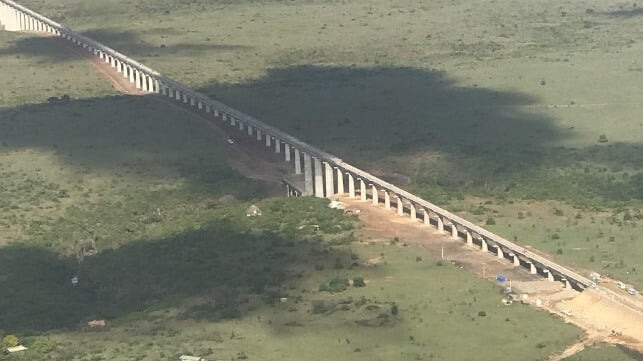Report: China Faces a Dilemma in Recouping African Belt-and-Road Loans

Several African nations grappling with debt distress are faced with seizure of strategic assets like ports, railways and power networks if China decides to force repayment on defaulted loans, a UK-based think tank has said.
Chatham House notes that China has built a large stock of debt across the African continent, and it now faces the challenge of managing these investments amidst economic woes linked to the pandemic and the war in Ukraine. Both factors have heightened the prospects of default in some African nations. As of November 30, 22 out of 54 countries in Africa were either in debt distress or at high risk of debt distress. Public debt doubled on the continent over the past decade to reach 65 percent of gross domestic product (GDP).
With Chinese lenders accounting for 12 percent of Africa’s private and public external debt, Beijing may be forced to become more demanding in extracting payment.
“This would be particularly detrimental if China resorted to appropriating significant assets such as ports, railways or power networks in response to defaults,” states Chatham House researchers.
This unwanted outcome of Chinese "debt-trap diplomacy" is becoming a real possibility, but the report points to the strategic and political costs that this would bring for China.
Angola, Ethiopia, Djibouti, Kenya, Nigeria, the Republic of the Congo and Zambia are the leading recipients of Chinese loans, which have been used to finance huge infrastructure projects like ports, railways, roads and energy development. In Zambia, which is in default, China is the biggest single creditor and holds roughly one-third of the country’s total external debt. The country’s total public debt to foreign and domestic lenders was just shy of $34 billion at the end of 2021, around 133 per cent of GDP.
“China faces a critical dilemma of how to protect the value of its investments in Africa, while simultaneously defending its strategic interests and maintaining its self-image as a partner, not a predator,” notes the researchers.
The researchers reckon that the growing debt problem in Africa has forced China to cut down lending. New loans have dropped from a peak of $28.4 billion in 2016 to $8.2 billion in 2019, falling to just $1.9 billion in 2020.
“China’s approach to African debt is one of dynamic change, with patterns of Chinese infrastructure-linked lending in Africa moving from resource-backed profligacy to more calculated business or geostrategic decision-making,” said the Chatham House researchers.
Top image: (Mfwicky / CC BY SA 4.0)
